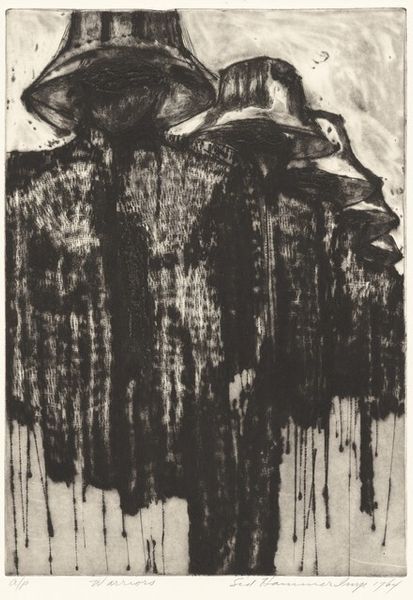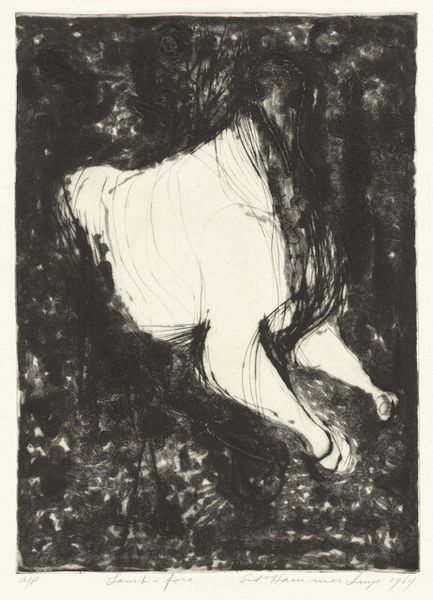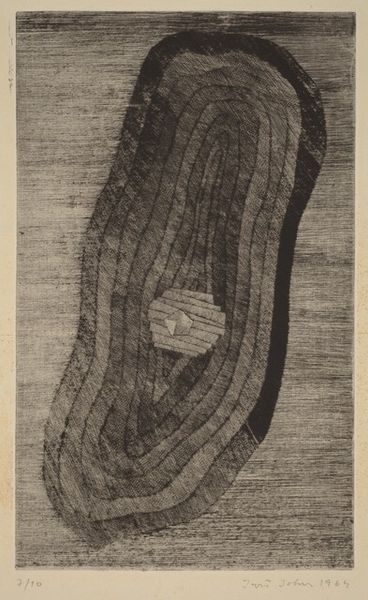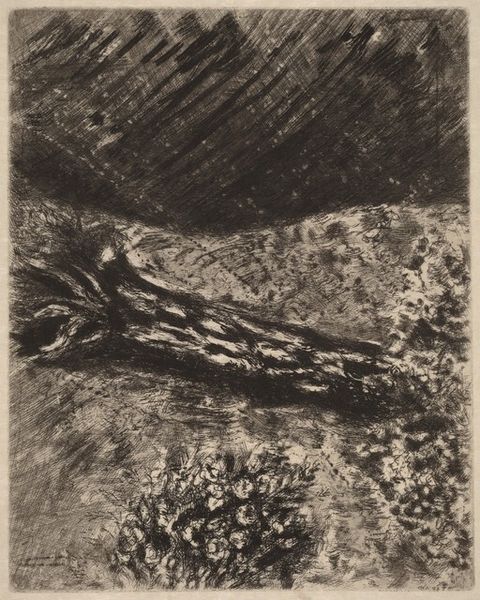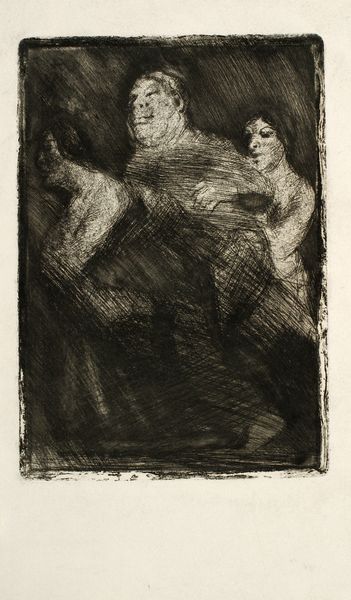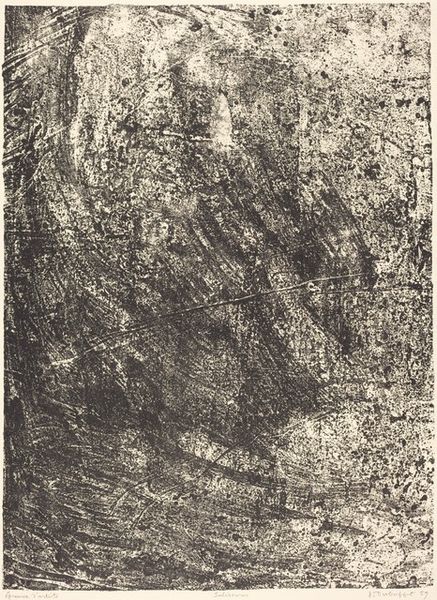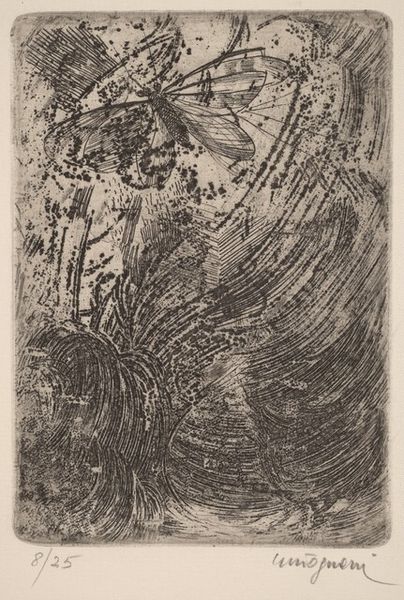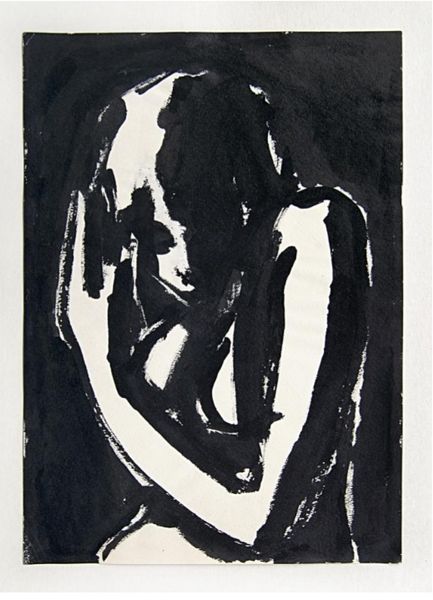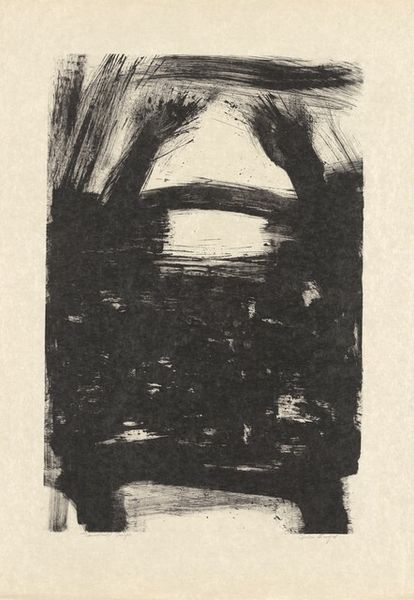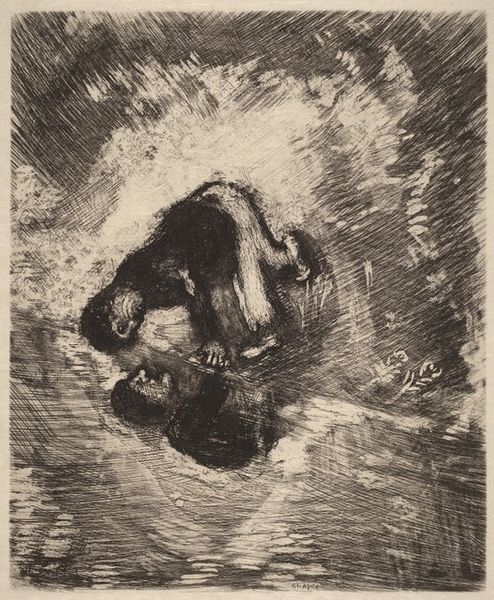
Dimensions: block: 40.4 x 49 cm (15 7/8 x 19 5/16 in.) overall: 53.8 x 64.1 cm (21 3/16 x 25 1/4 in.)
Copyright: National Gallery of Art: CC0 1.0
Editor: Edvard Munch's "The Kiss in the Field," from 1943, is a coloured woodcut print that immediately strikes me as melancholic. The reddish-brown tones and coarse lines create a sense of rawness. What historical or cultural elements might inform our understanding of this embrace? Curator: Given the 1943 date, we have to consider this image in the context of World War II and Norway's occupation by Nazi Germany. Munch, an established but aging artist, lived through considerable turmoil during this period. Could this “kiss” represent something beyond just romantic love? How might it reflect a longing for connection amidst such upheaval? Editor: I hadn't considered the war years directly impacting the imagery. I guess I saw the figures more as universally vulnerable. So, the setting, the "field," would be significant, too, suggesting perhaps a hidden, natural space outside of the controlled cityscapes? Curator: Precisely. Landscape in Munch's work often embodies the psychological and emotional state of the figures within it. The field, especially during wartime, can be viewed as a refuge, but also a symbol of national identity, of the "Norwegian soul," threatened by external forces. Can you see how this imagery of intimacy gains political resonance in such a setting? Editor: I do. So the art isn't just recording love but responding to its moment in history, adding layers to that representation? Curator: Exactly. And museums' choices of which works to display, and how to frame them, play a role in constructing this national narrative, especially post-war. Consider how his art was viewed both during and after Nazi ideology was confronted and dismantled, how did it reemerge? How was it valued? What meaning was extracted, and by whom? Editor: This discussion makes me see it not as just an isolated moment, but as a layered visual response to very specific pressures. Curator: It's a good reminder that even the most personal imagery is embedded in a larger political landscape.
Comments
No comments
Be the first to comment and join the conversation on the ultimate creative platform.
